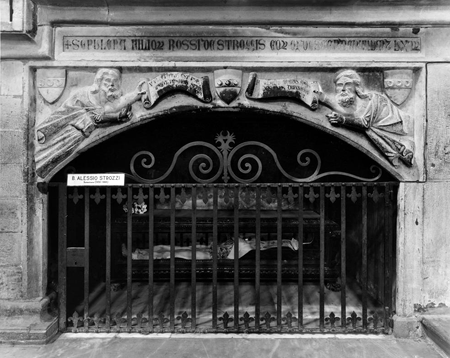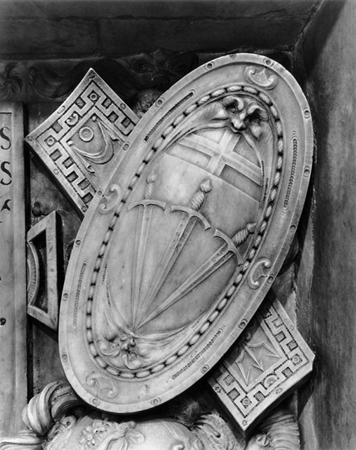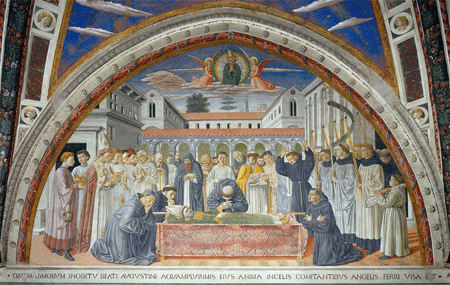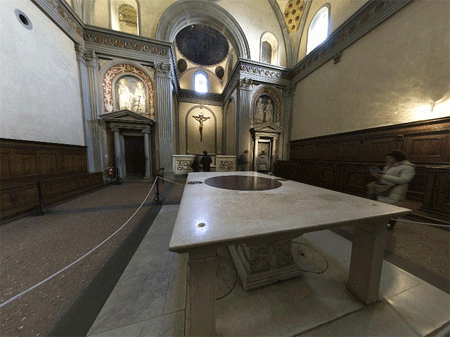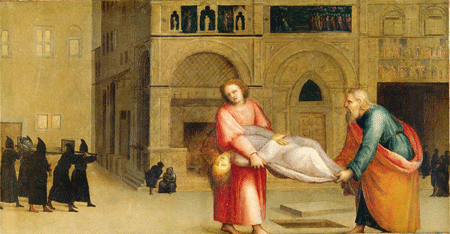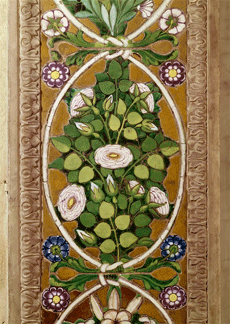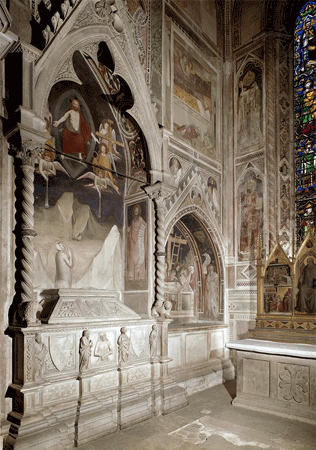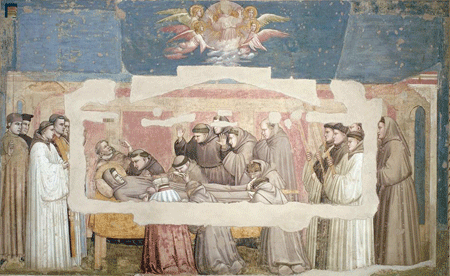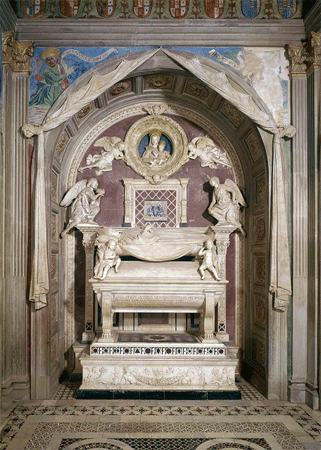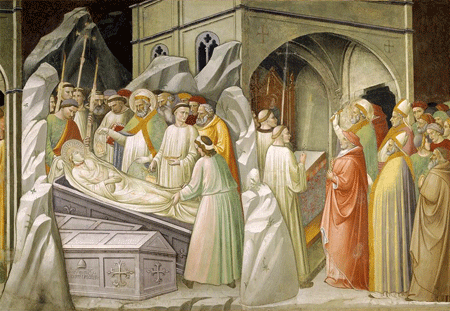
Anne C. Leader, Professor, SCAD-Atlanta
While the primary motivation for patrons of religious architecture and decoration was to gain or retain God’s grace, Florentine tomb monuments manifest a conflicting mix of piety and social calculation, reflecting tension between Christian humility and social recognition. Though some city churches still house many tombs, most of the thousands of original monuments have been moved, reused, or survive only in fragments. From the mid-thirteenth-century onward, Florence’s churches, both inside and out, were carpeted with floor slabs, coated with wall monuments, banners, and markers, and filled with stone caskets. Benefactors hoped to secure perpetual intercession for their souls, while preserving and promoting their family’s honor, with families typically installing tombs in multiple locations around the city. My research reconstructs the rich mosaic of tomb markers that once covered the floors, walls, and yards of the Florentine cityscape to bring us closer to how Florentines experienced the deaths and memories of their kin, friends, and competitors in the early modern city.
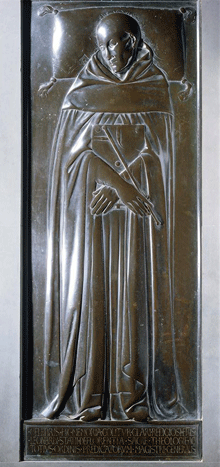
I explore the reasons behind and ramifications of Florentine burial choices ca. 1250-1532. To answer questions about how and why Florentines made their burial choices, I have developed the first relational database of Florentine burials to track tomb ownership and location to explain the Renaissance surge in private memorialization. Though still in the data-collecting phase, I have already identified, analyzed, and interpreted patterns within Florentine burial practice, providing a broader understanding of the visual culture of death as expressed by permanent memorials and their relationship to social self-fashioning. Eventually, I will make my database available online as an interactive website to allow users to compare Florentine commemorative practices with those in other urban centers as well as to find specific information about individuals, families, religious institutions, and tombs.
Although Florentines often opted for burial in their home parishes, many chose a mendicant church, monastery, or the cathedral, exacerbating tensions with local churches that relied on burying parish residents as a steady source of income. I investigate Florentine burial practice broadly, identifying trends in choice of location and tomb design, and specifically, by examining individual patrons and the institutions that housed their tombs. My findings enable more nuanced understanding of individual monuments, patrons, and institutions citywide; of formal and stylistic developments; and of larger cultural trends in burial choice while complementing studies of Florentine political history, factionalism, and social status.
I track both the type of church in which the tomb appeared and its form, decoration, and placement: Was the tomb placed outdoors, inside in the nave, aisles, transept, or crypt, or in a multi-use space like the sacristy or chapter room? Was the tomb an independent floor slab or wall monument? What was it made of? How was it decorated? My next steps are to gather more data from the Florentine archives in order to revise three papers given at the 2011, 2012, and 2013 meetings of the Renaissance Society of America as a peer-reviewed scholarly article.
